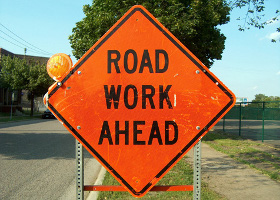 There’s a little part on your vehicle you may not know about, but when it develops a problem, getting it fixed sooner rather than later can save you a lot of money in the long run. Have I got your attention now?
There’s a little part on your vehicle you may not know about, but when it develops a problem, getting it fixed sooner rather than later can save you a lot of money in the long run. Have I got your attention now?
This part is called a ball joint boot. Ball joints are part of your suspension and allow your front wheels to move up and down and turn left and right. This boot covers and protects your ball joint.
Your suspension is, of course, exposed to nasty stuff getting kicked up from the road. Stuff like rocks, salt, water, dirt, and chunks of asphalt. If all that debris were constantly hitting your ball joints, they wouldn’t last very long. So someone had the bright idea to include protective “boots” that go over the ball joints. Great idea and they work…for a while. Just like every other part on our vehicles, they will need to be replaced eventually.
These boots not only protect against debris but they also protect against heat and friction. Because of this, they must be flexible. In addition to keeping contaminants out of your ball joints, they also keep lubricants in and allow the hot grease to expand. This is vital to make sure metal parts are moving smoothly.
Sometimes the ball joint boots get damaged after constant assault by road junk or temperature extremes. Other times they just get old. Rubber and other flexible materials can eventually just wear out (think of old rubber bands that break because they’re brittle from age). A regular suspension inspection will assess the condition of your ball joint boots. When your Express Car Care service adviser says there’s a problem with one of your ball joint boots, heed the warning. If they have a tear in them and aren’t replaced, lubricant can escape the ball joint and debris can get in and start creating a destructive mess.
Also keep in mind that if a ball joint is bad on one side, the other side might be on the verge of going too. Replacing both ball joints and ball joint boots at the same time saves time and money and just makes sense.

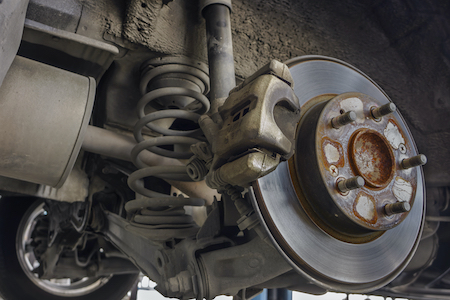 Every component of the suspension system is placed together with kinks, bushing, bearings, and joints. These connections can be made from metal, plastic, or rubber, and wear down over time.
Every component of the suspension system is placed together with kinks, bushing, bearings, and joints. These connections can be made from metal, plastic, or rubber, and wear down over time.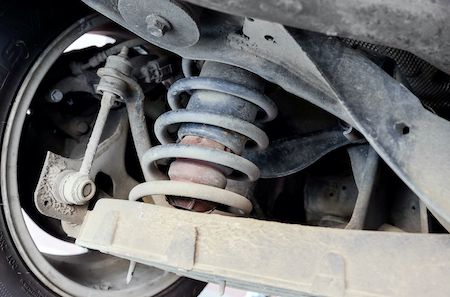 Rack and pinion steering connects the steering wheel and steering column to a rack, which moves a piston as the wheels turn.
Rack and pinion steering connects the steering wheel and steering column to a rack, which moves a piston as the wheels turn. Even with today’s technology and all the manufacturing upgrades we’ve made over the years, it’s still impossible to find a perfectly formed tire that will continue to be balanced all the way around as it ages. There will always be a part of the tire that ways a bit more, is a little thicker than other areas, or has imperfections that cause it to fall out of balance.
Even with today’s technology and all the manufacturing upgrades we’ve made over the years, it’s still impossible to find a perfectly formed tire that will continue to be balanced all the way around as it ages. There will always be a part of the tire that ways a bit more, is a little thicker than other areas, or has imperfections that cause it to fall out of balance. The brake pad is attached to the caliper, which presses up against the brake rotor to cause friction, ultimately slowing and stopping your vehicle.
The brake pad is attached to the caliper, which presses up against the brake rotor to cause friction, ultimately slowing and stopping your vehicle. Suspension systems should continue to operate effectively for many years and tens of thousands of miles/kilometers, holding your tires’ footprint on the road. Eventually components do wear out, but how long that takes depends a lot on how and where you drive.
Suspension systems should continue to operate effectively for many years and tens of thousands of miles/kilometers, holding your tires’ footprint on the road. Eventually components do wear out, but how long that takes depends a lot on how and where you drive.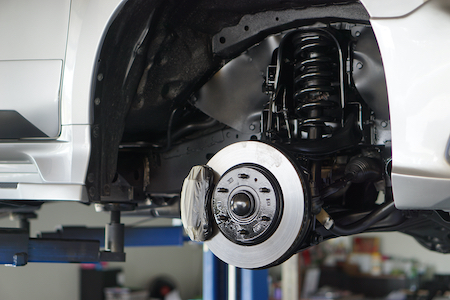 Imagine heading out on the open road, and pushing the pedal to the floor to reach 60, 70 miles per hour and more. What gives you control is your suspension system. What makes it a comfortable ride at every speed is your suspension system. Without it, you’d quickly spin out of control.
Imagine heading out on the open road, and pushing the pedal to the floor to reach 60, 70 miles per hour and more. What gives you control is your suspension system. What makes it a comfortable ride at every speed is your suspension system. Without it, you’d quickly spin out of control.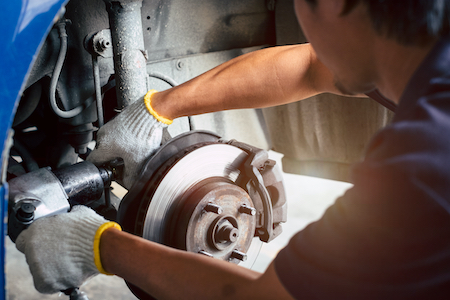 All of your vehicle’s systems offer various warning signs, including faulty shock absorbers. As you’re driving, you may notice any one of these items:
All of your vehicle’s systems offer various warning signs, including faulty shock absorbers. As you’re driving, you may notice any one of these items: When your wheels are in proper alignment, the entire suspension system is working together, keeping you pointed in the right direction. Without movement, you move in a straight line. But when wheels are out of alignment, that balance can shift and turn. Have you ever felt a pull to the right or left when you’re moving down an open stretch of highway? That’s a problem with your wheel alignment. It can cause other systems more wear as you overcompensate for the problem.
When your wheels are in proper alignment, the entire suspension system is working together, keeping you pointed in the right direction. Without movement, you move in a straight line. But when wheels are out of alignment, that balance can shift and turn. Have you ever felt a pull to the right or left when you’re moving down an open stretch of highway? That’s a problem with your wheel alignment. It can cause other systems more wear as you overcompensate for the problem.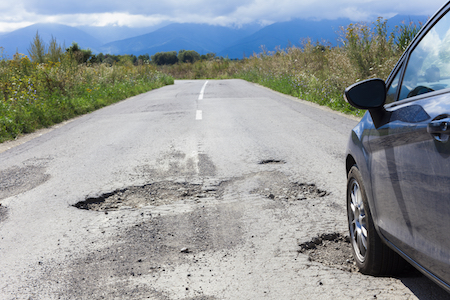 Struts are built into the structure of your suspension system. They are made from many different parts, including the coil spring and shock absorber, and affect your vehicle’s steering and alignment.
Struts are built into the structure of your suspension system. They are made from many different parts, including the coil spring and shock absorber, and affect your vehicle’s steering and alignment.